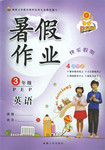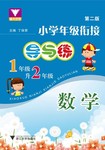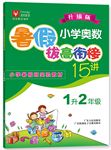题目内容
| 阅读理解 | ||||||||||||
| Teamwork is just as important in science as it is on the playing field or in the gym.Scientific investigations (调查) are almost always carried out by teams of people working together.Whatever the task your group is assigned, a few rules need to be followed to ensure a productive and successful experience. What comes first is to keep an open mind, because everyone's ideas deserve consideration and each group member can make his or her own contribution.Secondly, it makes a job easier to divide the group task among all group members.Thirdly, always work together, take turns, and encourage each other by listening, clarifying, and trusting one another. Activities like investigations are most effective when done by small groups.Here are some more suggestions for effective team performance during these activities:make sure each group member understands and agrees to the task given to him or her, and everyone knows exactly when, why and what to do;be responsible for your own learning, though it is by no means unwise to compare your observations with those of other group members. When there is research to be done, divide the topic into several areas, and this can explore the issue in a very detailed way.You are encouraged to keep records of the sources used by each person, which helps you bring back the origin of the problems that may happen unexpectedly.A file for exchanging information (eg, photocopies of notes, oral discussion, etc.) is also important, for a wellchosen method not only strengthens what you present but also makes yourself easily understood.Most important of all, it is always wise to make decisions by compromise and agreement. After you've completed a task with your team, make an evaluation of the team's effectiveness-the strengths and weaknesses, opportunities and challenges. | ||||||||||||
|
3. Support/Encourage/Back 4. Suggestions
5. given/assigned 6. responsibility
7. topic/subject/issue 8. case
9. Exchange/Share 10. Evaluate

 学练快车道快乐假期暑假作业新疆人民出版社系列答案
学练快车道快乐假期暑假作业新疆人民出版社系列答案 浙大优学小学年级衔接导与练浙江大学出版社系列答案
浙大优学小学年级衔接导与练浙江大学出版社系列答案 小学暑假作业东南大学出版社系列答案
小学暑假作业东南大学出版社系列答案 津桥教育暑假拔高衔接广东人民出版社系列答案
津桥教育暑假拔高衔接广东人民出版社系列答案 波波熊暑假作业江西人民出版社系列答案
波波熊暑假作业江西人民出版社系列答案
IV. 阅读理解:(共20题,每小题2分,共40分)
A long time ago, before there was any money (coins or paper money), people got the things that they needed by trading or exchanging. Salt was one of the first items used to exchange for other items. Later, some of the common things that were used for exchanging were tea leaves, shells, feathers, animal teeth, tobacco, and blankets. Around 3000 BC, barley, a type of grain, was used for exchanging.
The world’s first metal money was developed by the Sumerians who melted silver into small bars all weighing the same. This was around 1000 BC. About three hundred years later, people started using coins as official money.
Around 640 BC, people in the ancient kingdom of Lydia ( which was in Turkey) created special coins of exact with and purity (纯度). They were made of gold and silver and were stamped with a lion’s head.
Later, other empires such as Greece, Persia, and Rome adopted the concept of coins and started developing their own in many different shapes and different metals.
Around the year 1000, the Chinese started using paper money. The Chinese were the first to use paper money. The Europeans discovered this thanks to Marco Polo who went to China in 1295. the Chinese had different values for the paper notes which were made by the Chinese government.
Around 1661, Sweden became the first European country to make paper money. Until 1850, the Spanish dollar was the coin most widely used throughout the world.
1What is the best title for this passage?
| A. | The history of money |
| B. | How people traded in the past |
| C. | The invention of paper money |
| D. | The use of coins around the world |
| A. | barley had always been used for exchanging |
| B. | only a few people knew how to trade with others |
| C. | salt was the most widely used item for exchanging |
| D. | many kinds of things were used for exchanging |
| A. | Around 1300 BC. | B. | Around 1000 BC. |
| C. | Around 700 BC. | D. | Around 640 BC. |
| A. | replaced | B. | changed |
| C. | accepted | D. | invented |
A. Spain B. China C. Sweden D. Lydia
阅读理解(共15小题;每小题2分,满分30分)
阅读下列短文,从每题所给的四个选项(A、B、C和D)中,选出最佳选项,并在答题卡上将该项涂黑。
A
Tom arrived at the bus station quite early for the London bus. The bus for London would not leave until five to twelve. He saw a lot of people waiting in the station. Some were standing in lines; others were walking about. There was a group of schoolgirls. Their teacher was trying to keep them in order. Tom looked around but there was nowhere for him to sit.
He walked into the station café. He looked up at the clock there. It was only twenty to twelve. He found a seat and sat down, facing a large mirror on the wall. Just then, John, one of Tom’s friends, came in and sat with Tom.
“What time is your bus?” asked John.
“Oh, there is plenty of time yet,” answered Tom.
“Oh, I’ll get you some more tea then,” said John.
They talked while drinking. Then Tom looked at the clock again.
“Good heavens! It’s going back-ward!” he cried. “A few minutes ago it was twenty to twelve and now it’s half past eleven.”
“You are looking at the clock in the mirror,” said John.
Tom wanted to kick himself for being so foolish. The next bus was not to leave for another hour. He has never liked mirror since then.
【小题1】Tom went into the station café because _______.
| A.John asked him to have a cup of tea |
| B.he wanted a drink there |
| C.he would meet a friend of his |
| D.it was early yet and he could find a place to sit |
| A.the right time | B.it is going slower |
| C.it is going backward | D.it is going fast |
| A.Tom missed his bus. |
| B.He liked mirror even before. |
| C.The next bus would leave soon. |
| D.Tom arrived London on time. |